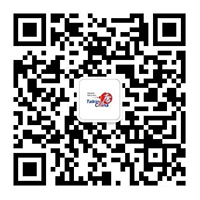You may be a customer who needs translation services. As a translation service provider, how can we precisely understand your needs, better think about your problems from your perspective, and provide targeted solutions for you?
Below, we will use a case of Under Armour, a well-known sports brand with continuous translation needs to specifically explore how TalkingChina can provide valuable services based on customer needs.
Project Background:
UA plans to comprehensively upgrade the official website and optimize all the contents in simplified Chinese and Hong Kong and Taiwan traditional Chinese. Before this TalkingChina has already provided some product translation service.
TalkingChina’s Solutions:
1. Getting specific translation needs information
2. Analyzing customer needs
1) In recent years, with the rapid development of the “new retail model” online business, UA opened flagship stores on e-commerce platforms such as Tmall and Jingdong. The number of products is growing at a geometric level. For this new part of the translation needs, efficiency, accuracy and consistency are the biggest concerns.
2) Whether it is the official website or the E-commerce platforms, the content is aimed at impressing the target consumers, so the translation requires high in marketing effectiveness.
3) In 2015, the new advertising law was promulgated and implemented. It was called “the most stringent punishment” in history. The original Ads words such as “top” and “best” became prohibited. How to check the banned words in the digital contents as soon as possible is a difficult problem for the customer.
4) We also found that the color classification of the clothes is very numerous, and the descriptions such as “sky blue” and “grass green” that people commonly use cannot accurately describe the color, which is not rigorous. How to better unify the description of the diversity of colors is also a requirement we find from the perspective of the customer.
3. Developing a solution
1) In response to the three translation needs of “translation efficiency, accuracy, consistency”, we further strengthen the accumulation and management of terms that have been done before. For example, the words related to fabrics: polyester fiber, mesh cloth, velvet, etc., which must not be mistaken in the product description. With the help of terminology, translation memory and CAT, accurate and fast translation is guaranteed;
2) For the language style and translation considerations, we have developed a style guide for the client. It is summarized and compiled to facilitate internal learning and sharing.
3) For marketing effects, marketing communications translation is a stand-alone product with very different characteristics of TalkingChina. After determining the language style and matching the appropriate team of translators, we have developed a service plan for regular communications with the customer, including regular product training, to constantly improve the mastery of the customer's product, style, and marketing intentions;
4) In response to the increased language requirements, TalkingChina’s Resource team quickly recommended the appropriate translators of Hong Kong and Taiwan traditional Chinese. They are tested specifically for US and the approved ones join in the UA translator team;
5) In response to the need to check the banned words, TalkinChina’s engineer team developed a technical tool which can be imported all the prohibited words and be updated regularly. During the translation process, if there is a prohibited word, the system will automatically mark out and prompt the translator to change the word.
6) For color coding requirements, we think that as long as we use a uniform standard color fixing system with our customer, there will be no deviation. So we use a small software of HTML colors, which contains various colors and corresponding codes. The customer told us the color code before translation and we can find color samples through the software, providing an intuitive reference, and accurately name the color.
4. Implementing and adjusting solutions
The customer service, project management, translation, resources and technology teams work together to implement the solution under the constraints of the project workflow.
In this project, the workflow is: translation + editing + forbidden word checking + (DTP) + proofreading.
The implementation needs to be adjusted after the project's running-in and collecting customer feedback. It is a dynamic process, and the center around all the work will never change: Is the customer's demand satisfied? Have we solved the problem for the customer?
Conclusions:
In this case, "termbase", "style guide", "market communications translation", "translators’ product training", "forbidden words checking", "color coding" and other points form a complete set of customized service plans. The development of service plans is centered on customer needs.
It can be seen that an excellent translation service provider must understand the translation needs of customers. They are professional guides, reliable partners and helpers. Today, with the rapid development of machine translation, while embracing machine translation and translation technology, TalkingChina Translation must always put the translation needs of customers first, think about problems from the perspective of them, and try to analyze how to help customers solve problems and how to create value for them. This is the part of the translation service that the machine can never replace.






